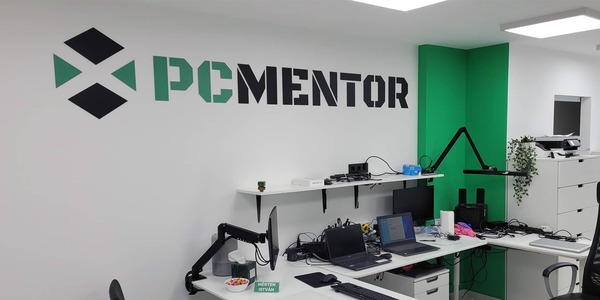- Parci: Milyen mosógépet vegyek?
- D1Rect: Nagy "hülyétkapokazapróktól" topik
- Gurulunk, WAZE?!
- Hieronymus: A németországi vasúthálózat
- M0ng00se: Hardvert áruhitelre?
- Luck Dragon: Asszociációs játék. :)
- sziku69: Fűzzük össze a szavakat :)
- sziku69: Szólánc.
- MasterDeeJay: Noname 1TB-os SATA SSD teszt
- erkxt: A Roidmi becsődölt – és senki nem szól egy szót sem?
Új hozzászólás Aktív témák
-

Petykemano
veterán
válasz
 S_x96x_S
#5201
üzenetére
S_x96x_S
#5201
üzenetére
Agner:
"A serious bottleneck is a decoding rate of 4 instructions or 16 bytes per clock. To compensate for this, the Zen 3 has a micro-op cache with 4096 entries after the decoder.
The increased throughput in terms of instructions per clock may be difficult to utilize if the software has long dependency chains (where each calculation must wait for the result of the preceding one). It is now more important than ever to avoid long dependency chains.
The bottleneck in the decoder appears to be difficult to overcome. This is a consequence of the messy x86 code structure where instructions can have any length from 1 to 15 bytes, and it is complicated to determine the length of each instruction. Intel processors have the same bottleneck and the same decoding rate. The programmer must make sure the critical part of a program fits into this micro-op cache if you want to get the maximum throughput. It is important to avoid loop unrolling where possible in order to economize the use of the micro-op cache. (The Clang compiler often makes excessive loop unrolling)"
[link]Az AT fórumon két elképzelés (patent) is fölmerült.
Én nem értek hozzá, nem tudom megmondani, hogy melyik mennyire jó vagy nem jóVirtualuizált uop cache [link]
A másik pedig a Tremont féle dual-decoder út [link]Persze lehet, hogy mindkettő módszer együttes használata adja a legjobb eredményt - és a legtöbb tranzisztor és fogyasztástöbbletet az Armhoz képest, ahol ilyen trükkökre nincs szükség.
Mindenesetre úgy tűnik ez alapján, hogy egyelőre hard Wall nincs, csak ha fejlődni szeretnének, akkor arra az Armhoz képest több tranzisztort és fogyasztást kell áldozni.
Egyelőre mindenki azt mondja, hogy az IPC szignifikáns növelésének legkézenfekvőbb módja a mag szélesítése lenne [link] aminek az x86 esetén az a korlátja, hogy a decoder nem tudják 4(-5)-nél szélesebbre venni.
Valószínűleg enélkül is lehet IPC-t növelni - valahogy úgy, ahogy az intel teszi, hogy a bufferek, regiszterek és cache-ek 25-50%-os növelése itt-ott ad 1-2%-os gyorsulást, ami végülis kiadhat egy valamirevaló 15%-os előrelépést egy generációban. De ez nem az a fajta ugrás, amit az igen vékony bulldozer magról az akkori értelemben széles ryzen magokra ugrás hozott és amivel utol lehetne érni az Apple M1-et.Úgy tűnik, hogy ennek az akadálynak az elhárítása a következő pár év nagy kihívása és beszédtémája lesz.
Új hozzászólás Aktív témák
- Eladó Lian Li O11D MINI-X gépház
- Lenovo ThinkPad P17 Tervező Vágó Laptop -50% 17,3" i7-10750H 32/512 QUADRO T1000 4GB
- FSP DAGGER PRO ATX3.0(PCIe5.0) 850W Sfx tápegység
- Eladó PNY GeForce RTX 4070 Ti SUPER 16GB OC XLR8
- HP EliteBook 850 G8 Fémházas Multimédiás Laptop 15,6" -65% i7-1185G7 16/512 Iris Xe FHD Magyar
- Bomba ár! HP EliteBook 840 G5 - i5-8G I 8GB I 128GB SSD I 14" FHD I HDMI I Cam I W11 I Gari!
- Külföldi csomagszállítás Packeta csomagpontokon keresztül!
- Xiaomi Redmi Note 13 5G 256GB, Kártyafüggetlen, 1 Év Garanciával
- AKCIÓ! Lenovo Thinkpad P15 Gen1 15 FHD notebook - i7 10750H 16GB RAM 512GB SSD Quadro T1000 W11
- BESZÁMÍTÁS! Asus TUF F15 FX506HM Gamer notebook - i5 11400H 16GB DDR4 RAM 512GB SSD RTX 3060 6GB W10
Állásajánlatok
Cég: PCMENTOR SZERVIZ KFT.
Város: Budapest
Cég: CAMERA-PRO Hungary Kft
Város: Budapest



